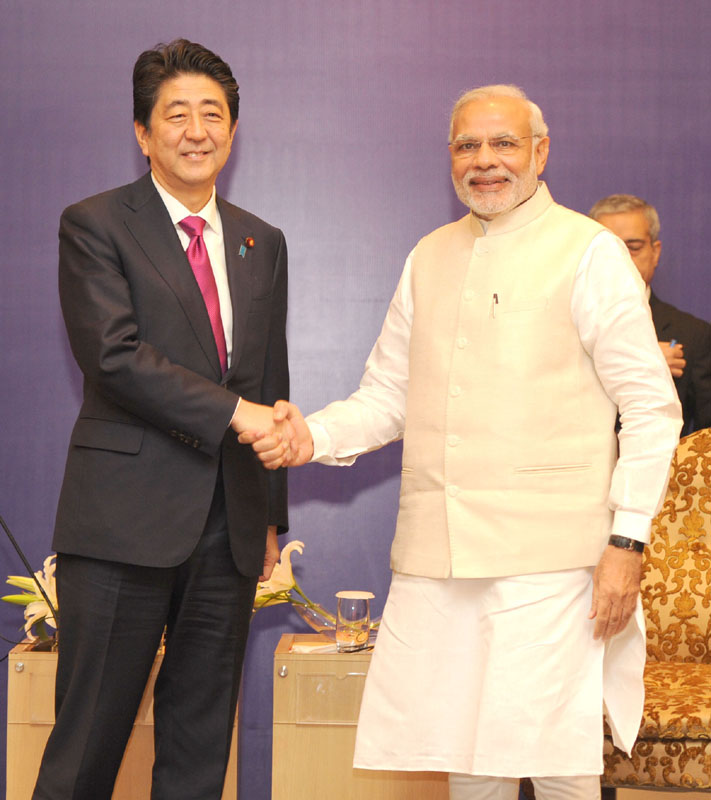The 21st century witnessed the growing geo-political, economic and security connections between the Western Pacific and the Indian Ocean and beyond. It has become the most strategically defined trade corridor giving rise to the new terminology of Indo-Pacific.
Two-thirds of global shipment of oil and one-third of the total bulk cargo passes through it. Almost 90 percent of oil supplies required by China, Japan and Korea from Middle East and Africa have to be shipped through the Indian Ocean. Thus it has become the world’s economic and strategic centre of gravity. It has long been part of US Pacific Command. It is an evolution rather than the rejection of Asia-Pacific.
The main driver for the growing importance to this concept is the rise of India and China — China in its increasing naval presence and naval strength, India to a lesser degree because of her growing interests in the Asia-Pacific. Japan has stakes in all the seas, Indian Ocean, Pacific Ocean, South China Sea and East China Sea. Indonesia is a “maritime nexus” between the Pacific Ocean and the Indian Ocean.
The idea that the Pacific region should not be divided along East Asia fault line led to the idea of supporting an Asia-Pacific identity. The misgivings which persisted among South East Asian nations about Japan’s “leadership” made Japan ask Australia to take the leadership in forming APEC in 1989. The Indian request for membership was rejected as India does not border the Pacific, although India was supported by Japan and Australia.
In 1991 after Japan saved India from bankruptcy and “Look East“ became the turning point in India’s foreign policy, India became a full dialogue partner with ASEAN in 1995. India also became a member of the ASEAN Regional Forum (ARF) which was considered to be a security valve for “collective security” as the United States’ large base in Philippines was closed in 1992 and this created a power vacuum.
India, Australia and New Zealand became full members in the East Asian Summit. With the ASEAN nations in the driver’s seat, the preponderance of China could be avoided. Japan’s apprehension that China would play the “history card” to isolate and marginalise Japan in the region could be overcome with the support of India. Hence Japan lobbied hard for inclusion of India, in spite of China’s reluctance. The ASEAN nations were also clear that they would not like to be exclusively dependent on China and the US or China and Japan.
Therefore, by the beginning of the 21st century, India’s collaboration with Japan started increasing in the Asia-Pacific region. The rise of China as an economic power as well as a military power was changing the geopolitical situation. The reluctance by the US in 1997 to bail out the nations in Asia in their economic crisis seemed to cede to China the place of being the leading power in the region.
China was emerging as a power through its increasing trade relations — China being Japan’s largest trading partner while ASEAN was Japan’s second largest trading partner. On the global level, while the combined trilateral level of trade between India, Japan and the US is $400 billion, US-China trade alone is $600 billion.
China’s aggressive search for exclusive possession of oil and gas resources from all over the world for her own industrial development is backed by her own growth as a naval power. China’s unilateral claim of sovereignty over the East Asian Sea and the South China Sea, ignoring the claims of the South East Asian nations, is an example.
Moreover, China defied the International Court of Justice and buttressed her claims by creation of artificial islands and used them as military bases creating a security threat to the nations in the region.
China is modernising its missiles, submarines, radar systems, anti-satellite weapons, etc. She is thus offering a military challenge to the US which has established her presence through her bases and security treaties.
At the same time, through generous aid for developing infrastructure and increased trade relations, she is drawing nations in Asia into her own sphere of influence, Though Japan’s trade and direct foreign investments in Southeast Asian nations is higher than that of China, China’s rise as a military power and her defiance of international law to establish her own hegemony instils a sense of fear.
Japan’s relations with China have thus led to “competitive engagement with hard edge”. In northeast Asia, Japan is in a weaker position vis-à-vis China.
Russia has settled her borders with China amicably. As the multi-billion dollar contract with China in May 2014 for natural gas and oil indicates, Russia is almost in a colonial relationship allowing China to exploit her resources, buying equipment and manufactured goods from China. No doubt, the strains in Russia’s relations with the US, including imposition of US sanctions on Russia, are contributing factors.
Japan, on the other hand, has not yet been able to settle the Northern Territories dispute with Russia and conclude a peace treaty, but is compelled to continue her cooperation with Russia in her own economic interests, setting aside the sanctions imposed on Russia by the US. Recently Japan signed an agreement for the joint development of the disputed islands hoping this would pave the way for a peace treaty.
India, since 1991, through its “Look East” policy has shown a convergence with Japan in her own national interest. Erstwhile Prime Minister Manmohan Singh, speaking at the 4th East Asia Summit held in Thailand in October 2009, raised issues other than economic integration, like the challenge of climate change, sharing of environment technologies, and appealed for a concerted and cooperative response to threats from non-traditional sources, such as piracy, transnational groups and extremists.
The underlying intention was to pro-actively engage China bilaterally and multilaterally in a web of rule-based community to ensure that she plays a responsible global role.
Now there is a greater convergence in defence collaboration by including Japan in the India-US Malabar naval exercises. Australia is now asking for observer status in these exercises. It is in the mutual interest of India and Japan to act as strategic partners in the Indo-Pacific in view of China increasing her naval presence through her nuclear-powered submarines in the Indian Ocean as well as her vigorous assertion to have a maritime silk road in her ‘One Road One Belt’ initiative for increasing connectivity between East China Sea, South China Sea and the Indo-Pacific.
India and Japan are democracies having the same fundamental values and respect for a liberal international order. The recent Pew Centre survey shows a change in Japanese insular attitudes. There is an acceptance of greater involvement by Japan in global affairs. However, far less percentage of people in Japan believe that Japan has a more important role to play in the world. India understands the reality of a multi-polar world and a multi-polar Asia and aspires to be a leading power. Japan agrees to promote her aspirations.
New Delhi, Tokyo and Washington have a common interest of preventing Chinese hegemony. The world is now faced with a dangerous situation as North Korea has been emboldened by China’s continuous support for her becoming a nuclear power. North Korea’s nuclear proliferation and her missile adventures are perceived as an additional threats for Japan.





